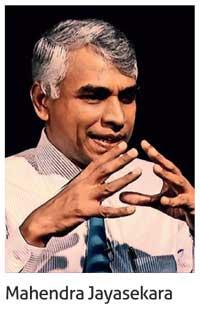27 Mar 2021 - {{hitsCtrl.values.hits}}
Sri Lanka’s tile and the broader ceramic industry is bracing for a growth of 12.5 percent in 2021, as the economy set off to a robust start this year and the consensus is building up for the country’s economic output to grow around 5 percent or more this year, on the back of the investor-friendly policies and low tax and record low interest rate regime.
 Sri Lanka’s tile manufacturers had one of their best years in 2020, as the pandemic-induced import restrictions on ceramics triggered a flux of demand for locally produced tiles.
Sri Lanka’s tile manufacturers had one of their best years in 2020, as the pandemic-induced import restrictions on ceramics triggered a flux of demand for locally produced tiles.
In fact, the industry, which was suffering from a supply glut equivalent to 10 months of stock build up leading up to the pandemic-induced lockdowns, managed to conveniently sell them down almost entirely in 2020, supported by the faster than anticipated recovery in housing and broader construction sector activities.
As the industry has now cleared its entire stock, which was equivalent to three million square meters of tiles, the industry currently operates at its ongoing production. The imports are also allowed now at a higher cess of Rs.490 per square meter, compared to Rs.183 a square meter before the pandemic.
With both segments – local production and imports, the industry now braces for a robust 12.5 percent growth, which is equivalent to two and a half times of the growth expected for the economy in 2021.
“With my 20 years of experience in this industry, generally the demand for tiles grow at two and a half times the GDP growth. That has been the trend in the past,” said Lanka Wall Tiles PLC and Lanka Tiles PLC Managing Director Mahendra Jayasekara. If the economy is projected to grow at 5 percent this year, “I can expect the demand for tiles to grow at 12 1/2 percent,” he added in an interview with Softlogic Stockbrokers, recently. Sri Lanka’s annual demand for tile is around 18 million square meters at present, which was down from around 25 to 30 million square meters before the pandemic. As the local manufacturers can meet 16 million square meters of that demand, it creates about 2.0 million square metres of shortage, which can now be met through imports. However, one bottleneck remains, mainly in sourcing locally found raw materials such as ball clay, feldspar and silica, due to the regulations restricting mining in paddy fields and in dense areas. “Ball clay is primarily found in paddy fields, mainly in the Kalutara (and) Waskaduwa area. And mining in paddy fields is a problem and it is a challenge,” Jayasekara, who is also considered as a spokesperson for the industry, said. Obtaining the mining licence to mine in paddy fields remains a huge challenge because the Agrarian Development Act specifically prevents paddy fields used for any other purpose other than paddy cultivation, he said. “In any case, mining is a problem here because Sri Lanka is a small country with a fairly high population density. So, whenever there is mining, we run into conflicts with the environment and also the villages because the environment problem gets magnified,” Jayasekara said.
“So, as we ready ourselves to expand capacity, we have to be mindful of the fact that we will be finding it increasingly difficult to get raw materials locally.
But we must also understand importing raw materials in bulk form like ball clay, silica and feldspar is completely out of question because the cost is prohibitively high,” he added.
19 Nov 2024 3 hours ago
19 Nov 2024 4 hours ago
19 Nov 2024 5 hours ago
19 Nov 2024 7 hours ago
19 Nov 2024 7 hours ago